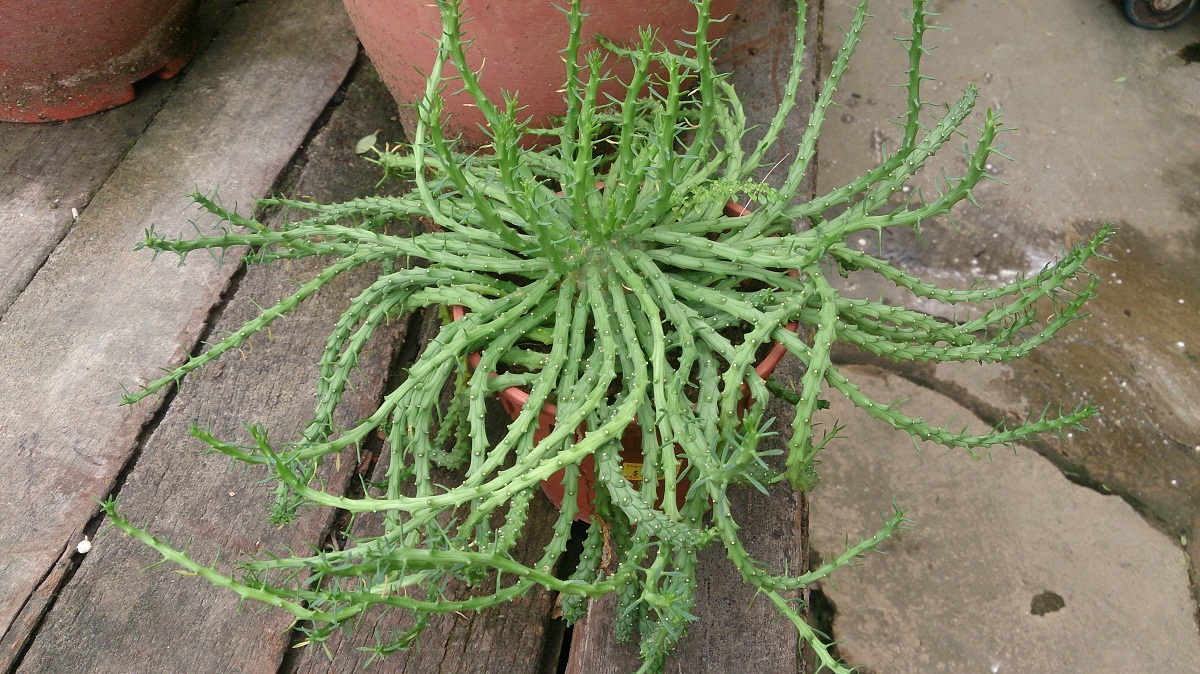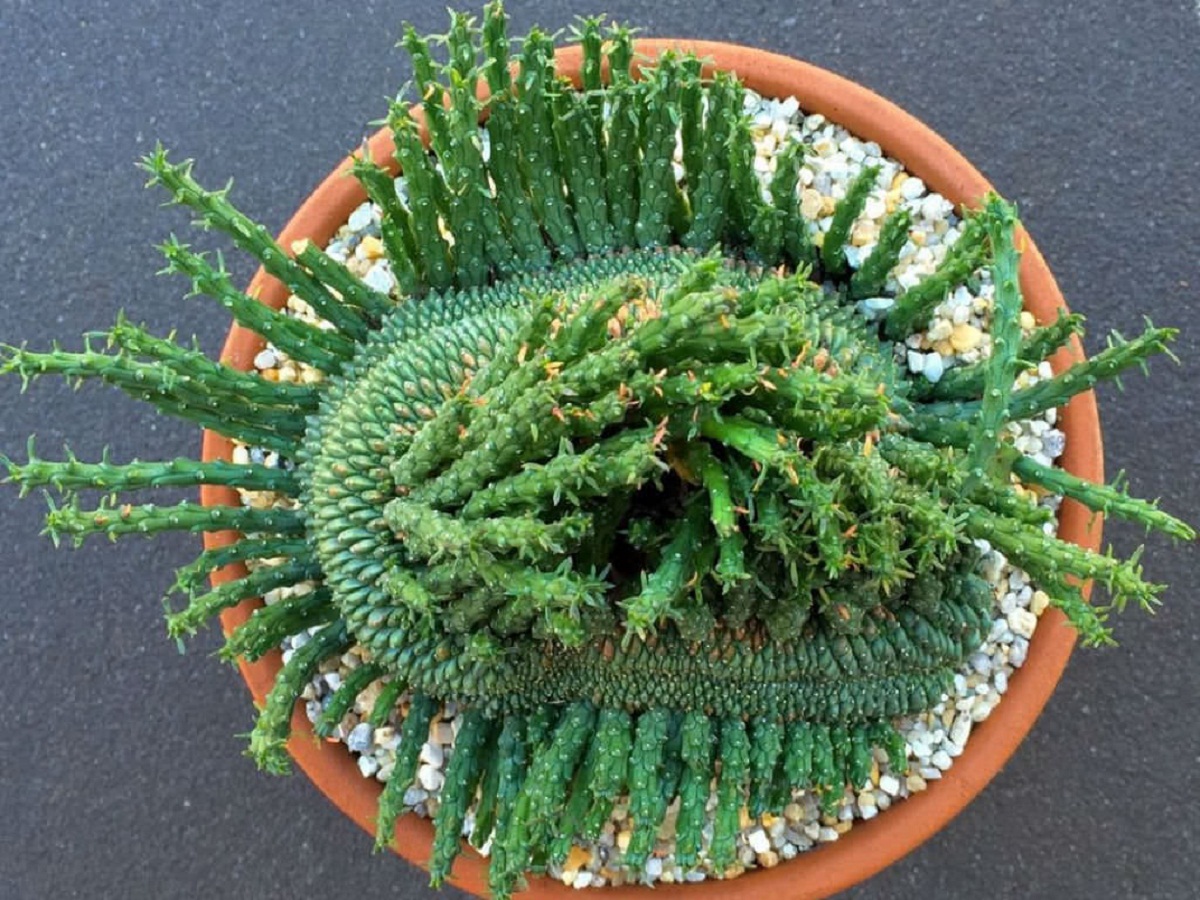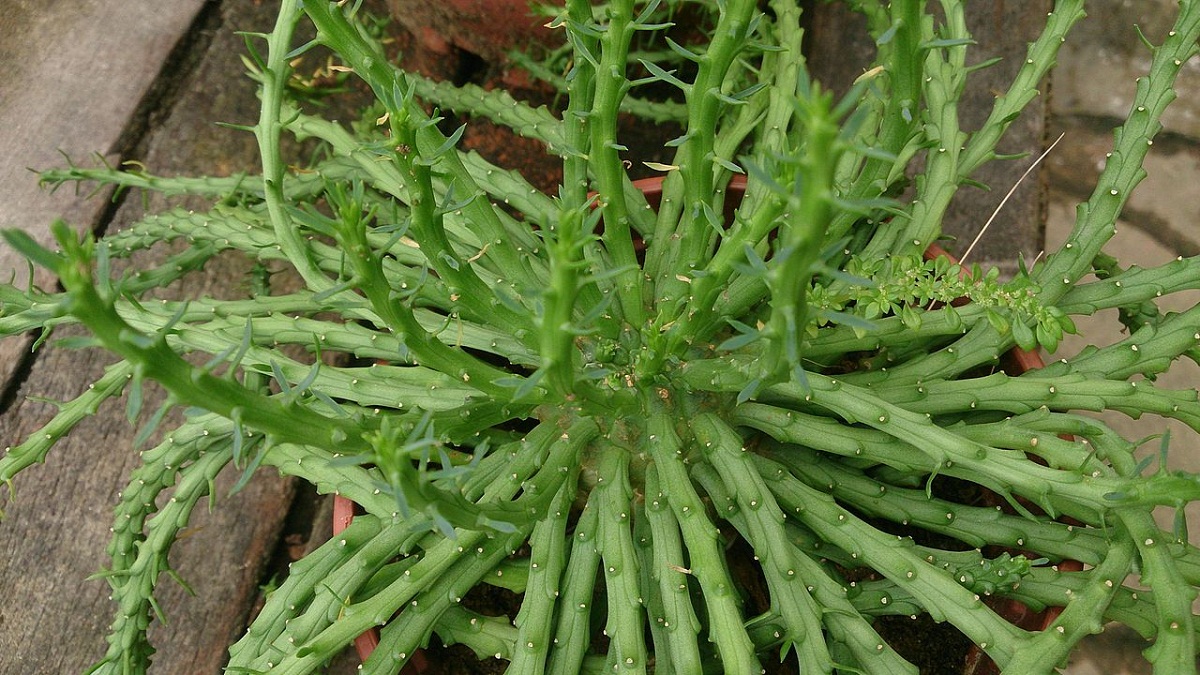
La Euphorbia flanaganii, also known for its shape as the head of a medusa, is one of the most exotic ornamental plants you can find. Her appearance is really different from the others, with a number of spreading shoots emerging from a central area, making her look like the head of that mythological goddess.
It can live both indoors and outdoors, so it is a widely used option as an ornamental plant for all types of homes. If you want to know in more detail all the characteristics of this peculiar plant, in this report we will tell you all about the Euphorbia flanaganii.
Origin of the Euphorbia flanaganii

Before referring directly to the type of plant Euphorbia flanaganii, we must take into account that this comes from a very large family of plants, whose origin is mostly the African continent, called Euphorbias.
It is one of the most diverse sets of plants that exists in nature, being in this family more than 2,000 species, among which are certain annual or perennial herbs, as well as trees and shrubs.
Greek history is what marks the name of this type of plant and there is a story behind it. In this case it has to do with Euphorbus, which is the known son of Cleopatra and Marco Antonio.
Apparently it was Euphorbus who discovered a plant that it had a very special resemblance to the African cactus, of which he discovered a very special property for that time, which was a superior laxative power.
It turns out that Euphorbus's brother gave his medical services to Caesar Augustus, Roman emperor, who had even erected a statue in his favor. That is why Juba II, out of sheer envy, decided to pay homage to that discovered Euphorbia plant, to honor who was his doctor and discoverer of the plant and its properties.
At present we can find the large number of varieties of Euphorbias around the world, but its original distribution has to do with all those zones of tropical and subtropical climate of Africa and America. In the case of succulents, they do not grow everywhere, but only on the continents mentioned above and in Madagascar.
Features
As we mentioned earlier, this type of plant also called "Medusa's Head" belongs to a family of plants called Euphorbiaceae and it is a type of plant that has its origin mainly in South Africa.
La Euphorbia flanaganii it is a widely used plant around the world in an ornamental way, being the hanging pots the ones that best highlight its morphology, of buds that appear from a stem and extend, falling and even surpassing the edges of the same pot that contains it, towards the outer side.
Regarding its shape, Medusa head is made up of a central stem where all the water that it absorbs is deposited for its survival. From that stem, the other stems that make up the plant emerge, which appear with a particular movement that gives it a very leafy and peculiar appearance.
In spring we can see these stems bloom, which happens in most cases, although these plants do not always flower. Among the characteristics that these flowers present, you can see an intense yellow color, something that adds an attractiveness to its ornamental character.
Regarding your care, the Euphorbia flanaganii It is one of the plants that most resists drought. The storage of liquid in its central stem works as a reservoir which means that it does not need watering for a long time, so it is special for those people who do not have too much time to take care of their plants on a daily basis or do not have the time to develop them.
Temperature
As we mentioned above, it is the tropical to subtropical climate that makes this type of plant develop in a good way. That is why Central Africa and Central America, that is, areas very close to the equator, are the places of proliferation of this species.
The jellyfish head does not grow comfortably in very cold temperatures. According to scientific studies, it could withstand temperatures of up to almost -4 degrees Celsius in extreme cases, but it is advisable not to expose it to those levels of cold, with temperatures above 10 ° C being the ones that best suit it.
In terms of lighting, jellyfish head is a plant that adapts to various types of light levels. The maximum exposure to sunlight outdoors is the place where it grows best, but it can also grow without problems in places where there is some kind of semi-shade.
This is what makes it an ornamental species widely used everywhere, since it can resist both outdoors and indoors, being used a lot in apartments and inside homes, requiring minimal maintenance work and growing without problems, as long as the interiors are illuminated.
Reproduction and cultivation

Regarding reproduction, this can be done through its seeds, which is the way that takes the longest, but at the same time the one that reproduces 100 percent of the characteristics of the head of medusa, or it can also be through stem cuttings, work that must be done yes or yes during the summer and spring periods.
To grow them, something that must be prevented is excess humidity, the main problem for their development. A substrate for succulents will suffice so that it develops in a good way. The use of a fertilizer that achieves the generation of new leaves will be an important addition.
Latex: A curiosity
The stems of this type of plant, as well as the rest of the Euphorbias, release a latex that serves to prevent the attack of pests. It is convenient that this latex does not rub our skin in any way and in the case of doing so, we should wash the area well, to avoid irritations or allergic reactions.
These are all the characteristics that the Euphorbia flanaganii, a beautiful plant and highly recommended as a decoration for your home, being able to decorate a place both inside and outside.